Augusta County Courthouse construction officially underway
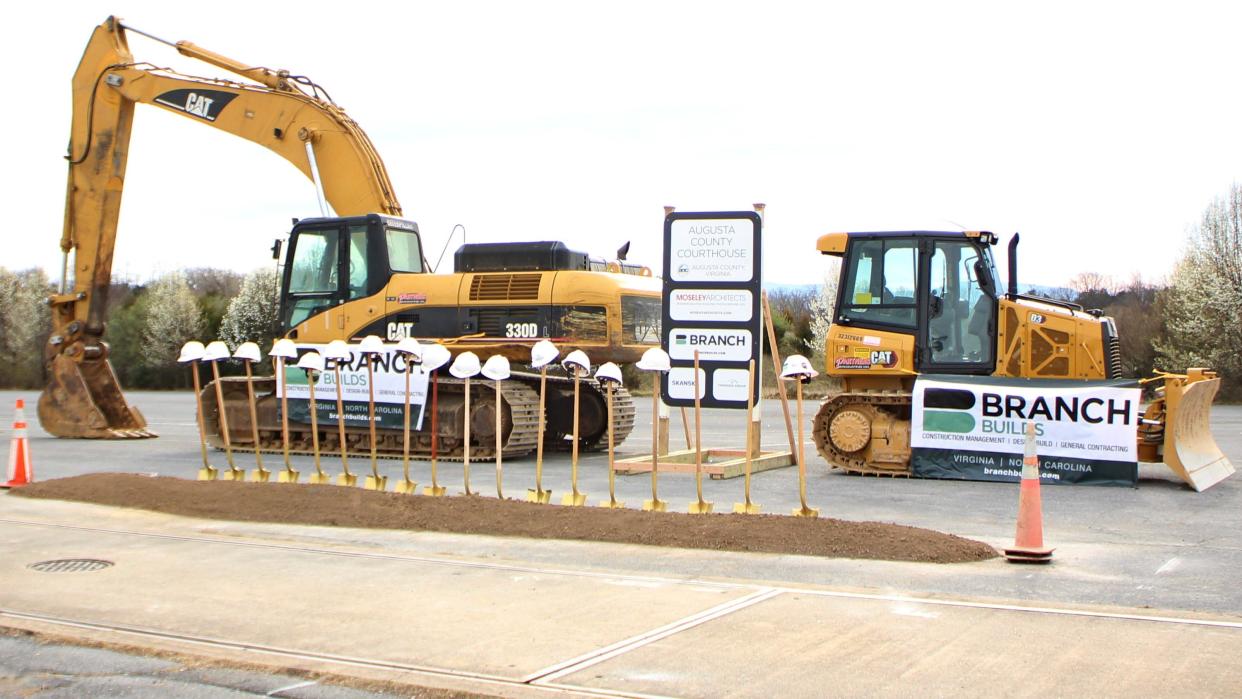
VERONA – Eighteen shovels stand like columns, emerging from an island line of dirt in a sea of concrete. They're on Dick Huff Lane, between Shenandoah Valley Social Services and the Middle River Regional Jail.
It's Friday. The wind whips a green Augusta County flag nearly horizontal. A tent withstands the wind, as does the photography drone flying overhead. Under the tent, fruit, pastries, and a cake cover a half-built rectangle of tables. Rows on rows of folding chairs point to the island of dirt, and a podium.
Behind the podium, Augusta County Board of Supervisors Chair Jeff Slaven and County Administrator Timothy Fitzgerald briefly look at the shovels together and test the microphone. Supervisor Carolyn Bragg stops them and takes a picture.
Around 10 a.m., Slaven calls for the crowd. Several dozen people, including judges, elected representatives, media, contractors, take a seat.
"Looks like everybody has quit wriggling and moving around, so I guess you've got your spot for the morning," says Slaven. He steps away, allowing Reverand John Craft, also an officer with the Augusta County Sheriff's Office, to open the statements with a prayer. Slaven returns.
"We are thrilled to celebrate this important moment in Augusta County's history," says Slaven. "The new courthouse will not only serve as a symbol of our commitment to justice but also as a cornerstone for our community, fostering civic pride and enhancing the quality of life for generations to come."
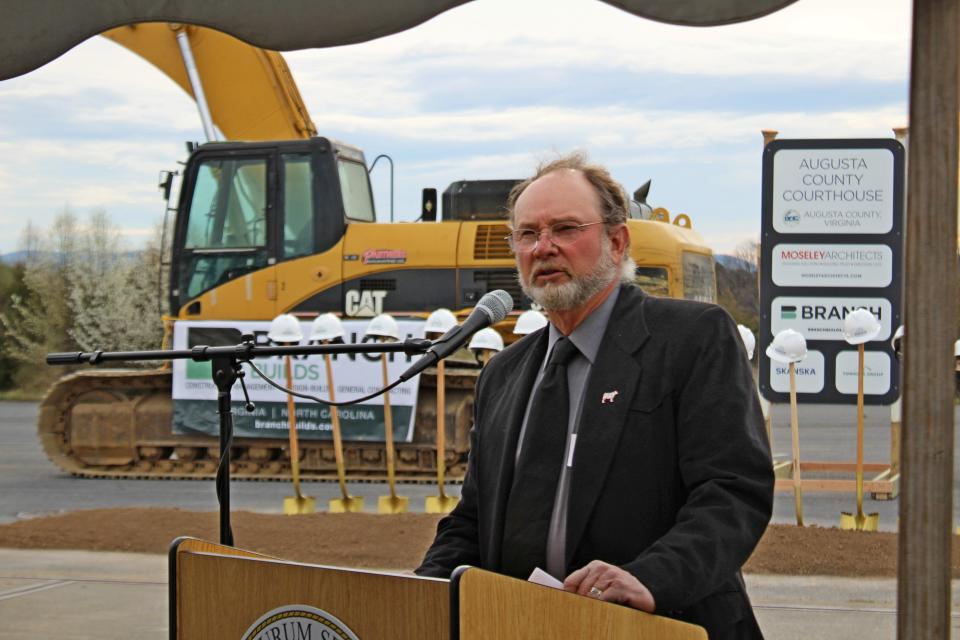
The supervisors previously approved an approximately $62 million contract with Branch Builds for courthouse construction on Feb. 28. During Wednesday’s meeting, they agreed to move forward with the project financing with bonds through the Virginia Resources Authority.
After Slaven, Fitzgerald approached the podium, outlining the history of Augusta County Courthouses, past and now present. After the presentation, Supervisor Pam Carter called the groundbreakers up to the shovels.
The dirt flew, and the courthouse is now underway.
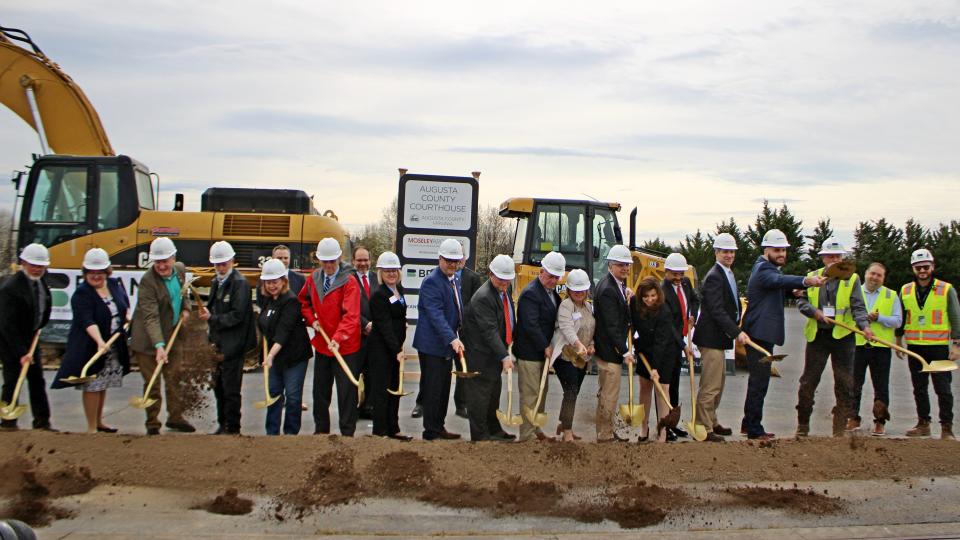
Fitzgerald’s full comments:
“Ladies and gentlemen, distinguished guests, esteemed colleagues, and citizens of Augusta County, today marks a significant moment in our county’s history, as we gather here. Amidst the anticipation and excitement of constructing a new courthouse. It is fitting that we take a moment to reflect on the remarkable journey that has brought us to this pivotable moment in Augusta County’s history.
“From the arrival of our first settlers in 1732, to the formal establishment of our county in 1738, our courthouse has mirrored the growth of our community. Our county’s first courthouse was erected in 1746. A modest log cabin offered to the colonial government in Williamsburg by William Beverley. In the middle of his Mill Place. Today Mill Place sits directly behind you, Mill Place Commerce Park.
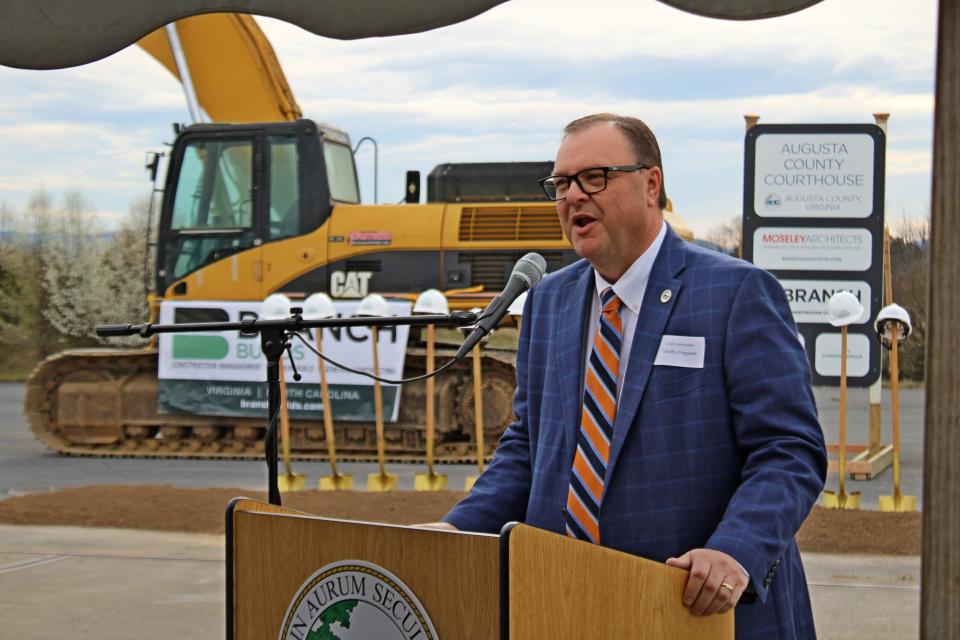
“A record from 1748 describes the courthouse as having cracks wide enough to let in the chill of the winter winds and windows without glass or shudders. Despite its humble appearance, this courthouse served as a bedrock for our fledging judicial system.
“In 1755, a second structure emerged with little known about its design or construction, except for the presence of a chimney and a fireplace, likely a small comfort against the harsh realities of frontier life.
“Our population grew and our county flourished. So too did the need for a more substainal courthouse. By the late 18th century, Augusta County had emerged as a stable and prosperous community. In 1789, our county’s third courthouse was built, with a stately edifice of stone, adorned with wooden columns, and a second floor.
“In 1835, our county’s fourth courthouse took shape under the capable hands of Thomas R. Blackburn, an architecture student of Thomas Jefferson during the construction of the University of Virginia. With its square footprint and elegant proportions, the 1835 courthouse served the county for 65 years.
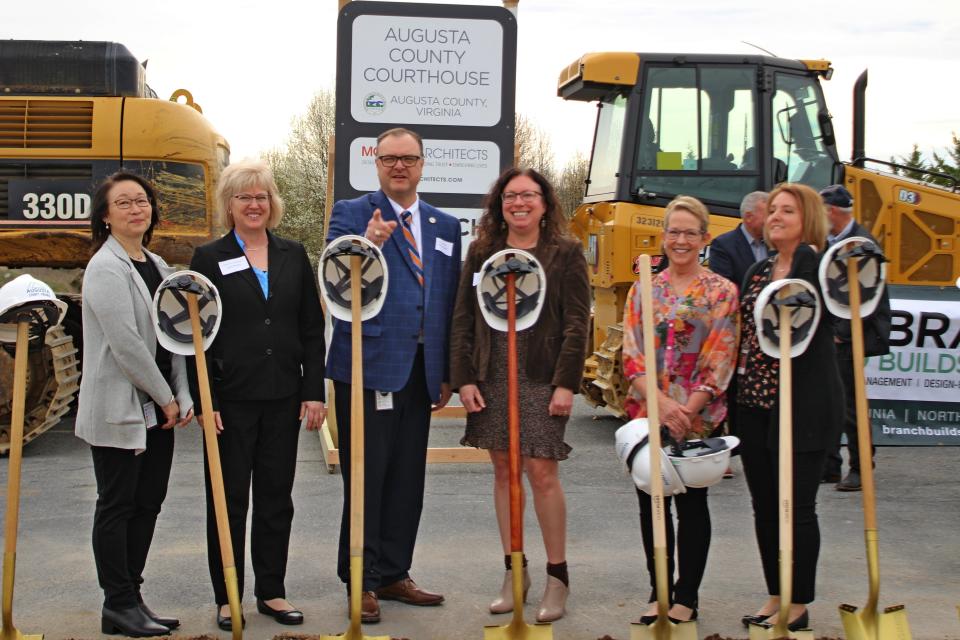
“In 1900, the Board of Supervisors hired a local architect by the name of T.J. Collins to design and remodel the courthouse. The planned remodel, however, turned into a newly constructed courthouse. It is this building that is the foundation of the current courthouse that we cherish today.
“There were a few significant remodels along the way. In 1939, they expanded the courthouse to its current footprint. In 1949, 2004, and again in 2008, this courthouse has served the county and its citizens in a stalwart fashion for nearly 125 years.
“Each iteration of our courthouse bore witness to the passage of time and the changing needs of the county. As our county continued to grow, it became increasing clear that our courthouse could no longer adequately serve the needs of our community. With each passing year, our judicial system strained under the weight of an ever-increasing caseload [and] the demands of modern [security in] our beautiful, but space-constrained, courthouse.
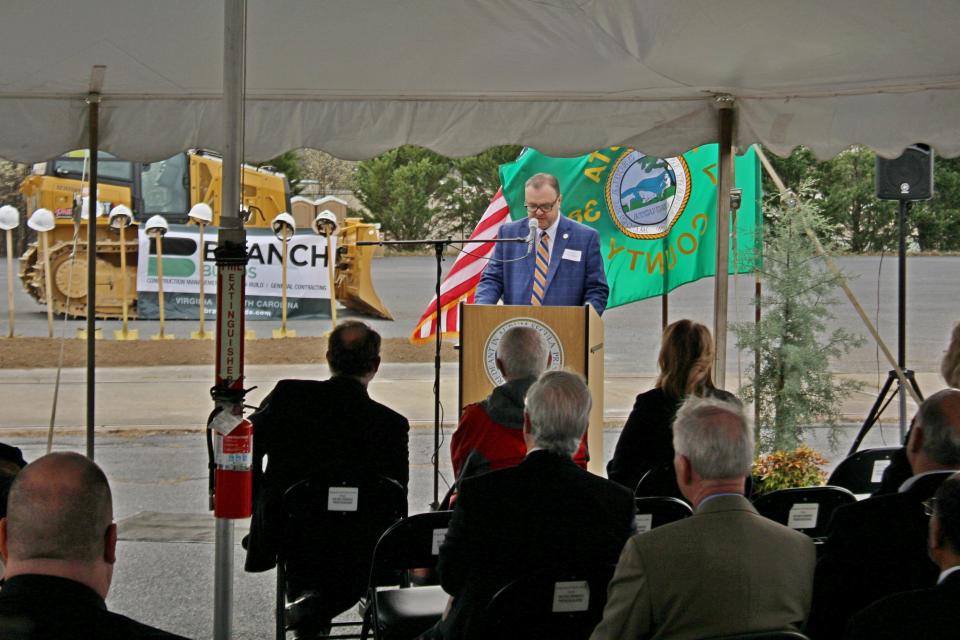
“In response to these challenges, for the last 30 plus years, under the tenure of 13 Board of Supervisors [members], Augusta County embarked on a journey of exploration to build a courthouse that would not only meet the modern needs of the courts, now and into the future, but also adhere to the construction and design restrictions imposed by building a historic courthouse in downtown Staunton.
“Between 2002 and 2015 alone, seven court analysis were done, looking at space needs for our circuit court, our general district court, juvenile and domestic relations court systems, and exploring ideas to satisfy their needs. Some of these ideas including renovating the old Western State building, creating a consolidated court system between the city of Staunton and Augusta County, expanding the courthouse to include a pedestrian sky bridge across Augusta Street to a new courts building located on the site of the bank, renovating the vacated Beverley Manor Elementary School while building a new courts building on the site of the district courts building, which, oh by the way, sits in a flood plane, and purchasing options on downtown properties to allow for the expansion of the 1901 courthouse.
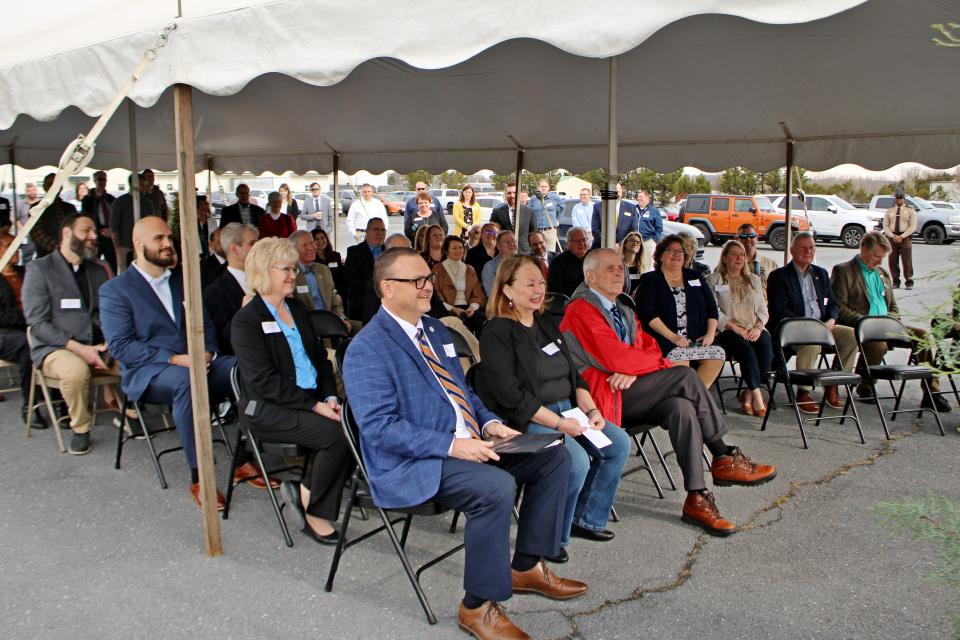
“We explored every avenue and possibility to build a courthouse in downtown Staunton that not only met the growing needs of our court system but also adhere to the Virginia Courthouse Facility Guidelines. Meeting the minimum court standards proved difficult to achieve, particularly while working with challenging historic preservation requirements, and keeping the costs of historic remodels in check. The cost for the perpetual renovations needed by the 100-plus year-old courthouse, while pursuing property options to expand, and in general working to retrofit the functions of a modern day court system into the shape of the buildings in the 1800s for mercantile businesses, were not insignificant.
“Due to the unsuccessful work to that point, the county then decided a referendum should be held on the issue. In 2016, a referendum was held concerning the relocation of the courts to Verona. Even when given approval to put the question on the ballot, the language of the referendum was restricted by Virginia Code to only include the location in Verona and the cost, making it very unclear to the average voter that the alterative cost, to remain in downtown Staunton, was at an even greater cost. As we all know, even with a tremendous effort to educate the voters, the referendum did not pass.
“Once the referendum failed, the county once again looked at options in downtown Staunton, to no avail. No options could meet the approval of the county and the city. With this being the case, in 2021, Circuit Court Judge Goodwin, who is here today, issued a show cause order, which made it incumbent on Augusta County to show how we were going to make the court system safe and in good repair.
“We found ourselves in a real dilemma. We could not make any of the project in downtown work for the needs of the court and in ways that were compatible with the requirements of historic downtown. Augusta County found itself under a court order, with no valid project ideas left.
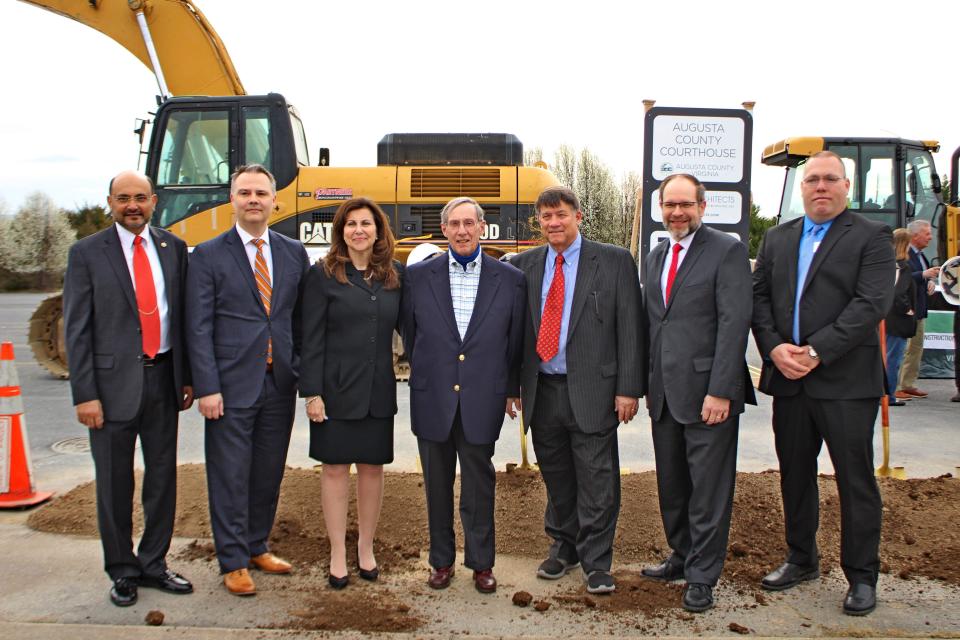
“The only solution we had was to go to referendum again, especially difficult because the requisite 10 years between referendums had not passed. We would have to not only ask the General Assembly for special permission to go to referendum but also to change the referendum question, to make it clear the choices the voters [really had].
“This difficult legislative process started in 2022. We had two champions – Delegate John Avoli, who’s with us today, and Senator Emmett Hanger. With great skill, they ushered House Bill 902 and Senate Bill 283 through the session. Garnering support with common sense and patience, they even secured an audience with Governor Youngkin, who was interested in understanding our obstacles and reasons for asking the voters again.
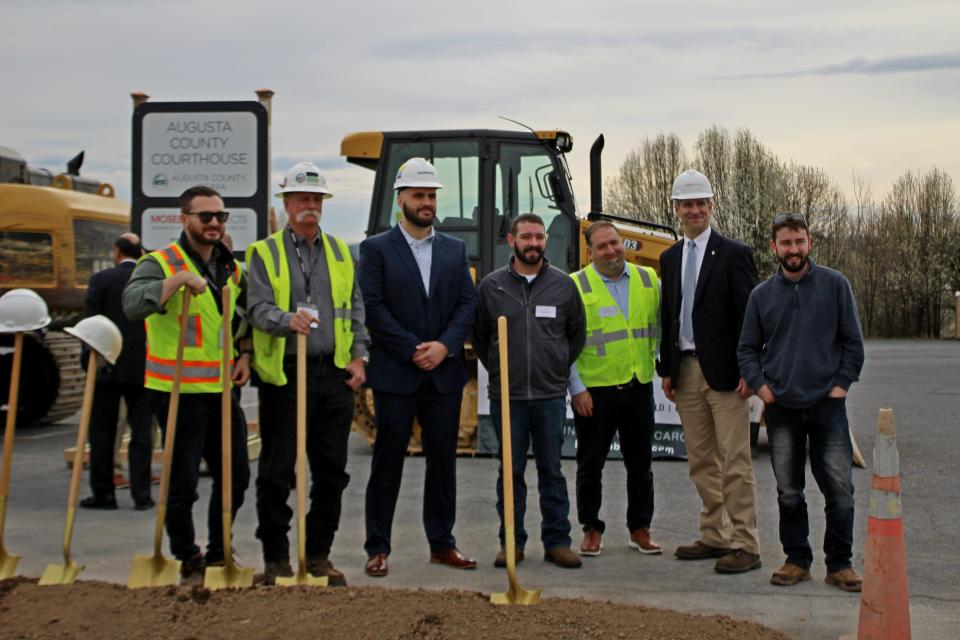
“As you can imagine, this was a nerve wrecking time. We were under the pressure and time restraints of the court order. We had no other options. Ultimately, the legislation passed and allowed us to ask the voters. Augusta County voters didn’t let us down.
“The rest, as they say, is history. This is what brings us here today. It’s not every day, or even in one’s lifetime, that a courthouse is constructed. The last time we built one was in 1901, and a fine one that was. It has served us well and will continue to in its second century and next phase of life.
“We find ourselves here today ready to embark on a new era. Our new courthouse is designed consistent with the architectural elements of a traditional Virginia courthouse, with red brick, white trim, four white columns, triangular pediment, and a cupula. A beautiful and fitting salute to our 1901 courthouse.
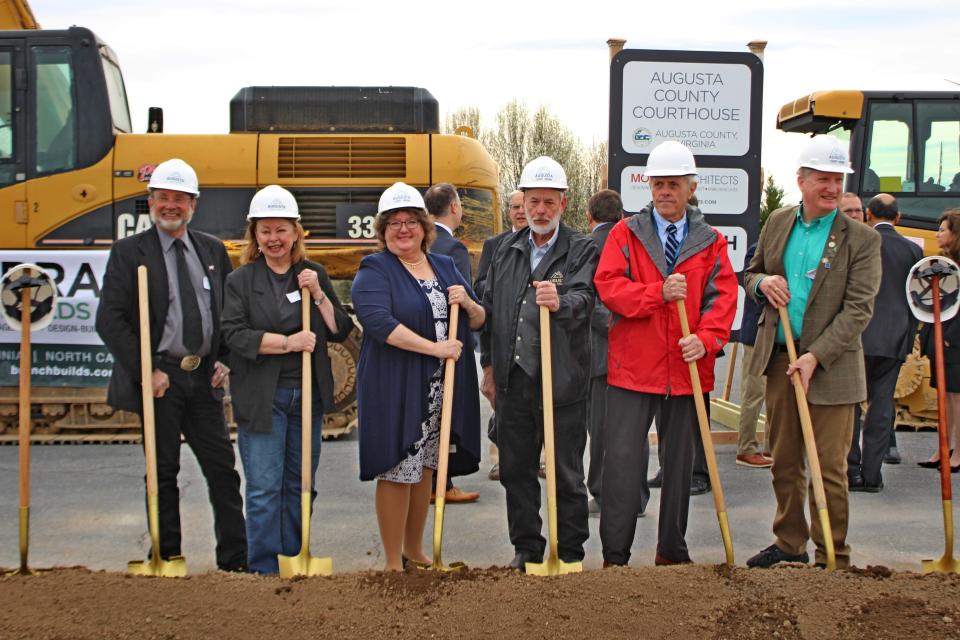
“I’ll stop here real quick for a small story. Judge Ludwig is here with us today. Prior to the 2016 referendum, Judge Ludwick and I traveled to Spotsylvania County to look at a courthouse. He probably remembers that. Judge Ludwick was deciding whether he wanted a new courthouse or not. We looked at that courthouse and I remember him saying, very clearly, to me, “I’m okay with a new courthouse, but I want it to look exactly like the one I’ve got.” It is close, judge, it’s close.
“More than 100 staff members in the Circuit Court and the clerk’s office, along with the Commonwealth attorney’s office, the general district court, clerk’s office, juvenile court, it’s clerk and services unit, the magistrate’s office, the sheriff’s department, and victim witness services will all find a home in this building. 124,000 square feet and over four floors will provide security and functionality dedicated spaces for the next 20 years. I would say next 100 years.

“A total of eight courtrooms, including circuit court, civil court, room that doubles as a jury assembly room, will serve a projected, combined caseload of more than 104,000 cases per year. The number of lives that will be touched in this building and the momumental decisions made here are staggering to comprehend.
“This courthouse will reflect the importance and promise that justice and truth under the law has in Augusta County.
“This courthouse also symbolizes the culmination of a vision for Augusta County first put forth in 1987 in the Augusta County Government Center Master plan. Developed at a time when all county offices and court services were located in downtown Staunton, it was apparent even then that the county needs were outgrowing the space. We had a need to move to Verona. This vision for a government center in Augusta County began with the purchase of this facility, which was Smith Transfer.
“Implementation began and the move of core government services and offices from downtown Staunton to the Government Center in Verona began in 1990. Shenandoah Valley Social Services moved in 1992. Sheriff’s office came to Verona in 2004. Our juvenile detention center was built in 2005, and the Middle River Regional Jail, which is directly behind us, in 2006. The administrative offices for Augusta County Public Schools moved here in 2013.
“Our courts are the final piece in this visionary master plan, which aimed to balance the growing needs of our county with efficient and financially effective consolidation of resources. With this building of a new courthouse, we move the county seat to Augusta County, completing the final phase of the master plan.
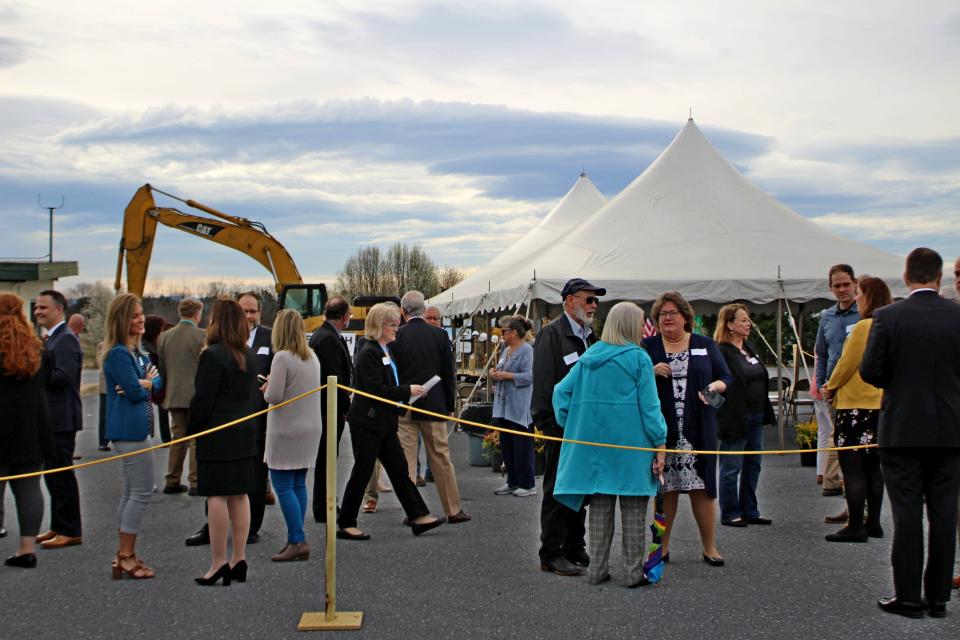
“Today, as we embark on this new chapter, we do so with a profound sense of gratitude to all that have contributed to this journey, to our legislatures who championed our cause with unwavering dedication, to our citizens that entrusted us with hopes and aspirations, and to the countless individuals, many are here today, who’s expertise, guidance, and unwavering support will have brought us to this historic moment.
“We extend our deepest gratitude.
“As we break ground for our new courthouse, let us remember the countless lives that will be touched, the profound decisions that will be made, and the enduring legacy that we are building for generation to come. Let us ensure that this courthouse stands as a beacon of justice, a symbol of integrity, and a testament to the values that define Augusta County. Let us never forgot what brought us to this moment, a journey marked by perseverance, enduring commitment, and the indominable spirit of Augusta County.
“Thank you.”
Lyra Bordelon (she/her) is the public transparency and justice reporter at The News Leader. Do you have a story tip or feedback? It’s welcome through email to lbordelon@gannett.com. Subscribe to us at newsleader.com.
More: Augusta supervisors address 54% average assessment increase
More: Historic Staunton Foundation purchases Cabell Log House
This article originally appeared on Staunton News Leader: Augusta County Courthouse construction officially underway

